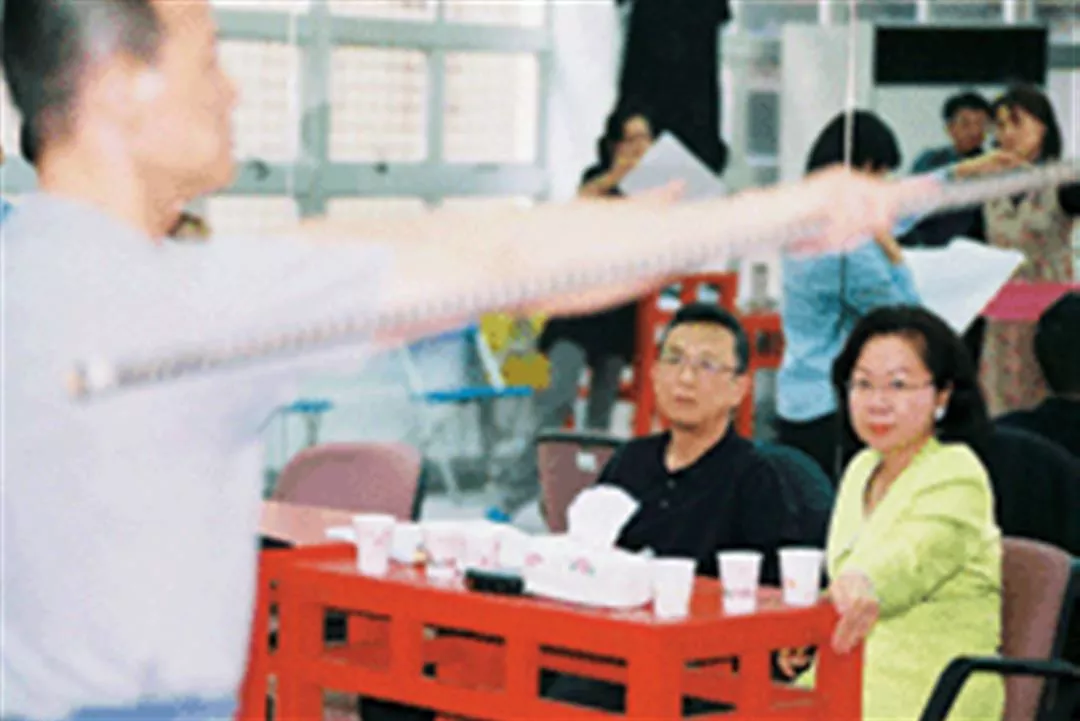Old dogs, new tricks
Tsao Fu-yong says that after passing through this arduous ordeal, everyone was able to reinvent themselves, and became filled with vigor. They no longer felt uncertainty or doubt, but had great confidence. "I believe that when the audience sees our performance they will be amazed!"
Dancer Lin Hsiu-wei, who also rehearsed relentlessly and shouted until she developed serious laryngitis, says that in two decades as a choreographer she never once had her ideas thrown back her as unacceptable-until Snow in August. And not only once! She has been found wanting four or five times, and expects to have to rework her stuff another ten times. Lin, who has worked with Peking Opera performers for many years and has a vast amount of experience, says that she can teach them to relax and change their gestures, and she can also make them into dancers. But what Snow in August demanded was not dance, but "dance that is not dance," and this had her stumped. For a time, she even began to wonder if Gao Xingjian had the wrong person for the job. But after her doubts passed, she stayed on. "Everyone trusted Gao Xingjian, since he knew the general direction." She concludes: "It was no mistake to follow him, he knew exactly where he wanted to go."
In order to satisfy the demands of the director, Lin started all over from scratch as if she were a student. She has no complaints, but in fact is filled with gratitude. "I'm grateful that the arts in Taiwan have had this opportunity to allow all kinds of performers to learn together as a team." In the course of this collective learning experience, she has broken through old forms, and has had an opportunity to completely reassess herself. Gao Xingjian did not want dancing bodies, or formulaic performance, so Lin had to develop an entirely new body language. This body language often uses the vocabulary of imagery, and she could be heard telling performers: "Your body has to be like a cloud floating by." "You're a person walking in a crowded night market." "It's as if you're desperate to shake off a snake that has wound itself around you." The performers, high in physical ability, often hammered out good moves in practice.
The experience of stage designer Nie Kuang-yan has been not much different from that of Lin Hsiu-wei. Nie reveals that Snow in August has been the most challenging work of his career. He says that rather than say that he designed the stage, it would be more accurate to say that he has expressed the director's ideas in the language of theater. Nie has done more than 150 productions, including Peking Opera, Taiwanese Opera, stage plays, ballet, and Western Opera, yet even such a vast range of stage experience could not encompass what Gao Xingjian wanted.
"He wanted something like 'the four unlikes,' a thing which is not, something that had never been done before." Nie was very troubled, and for a time did not know what to do. In order to get a better understanding of Gao's ideas, he immersed himself in Gao's book Soul Mountain, and studied Gao's paintings. As a result, from the book and from the paintings he began to grasp the director's idea of something which is substantial yet insubstantial, and at the same time is right there in front of your face.

Snow in August, which has cost over NT$16 million to stage, is, thanks to close cooperation between director Gao Xingjian and producer Tchen Yu-chiou, soon to see the light of public performance. You could say that Snow in August has been a sensation even before it has opened, so the real thing is really something to look forward to.